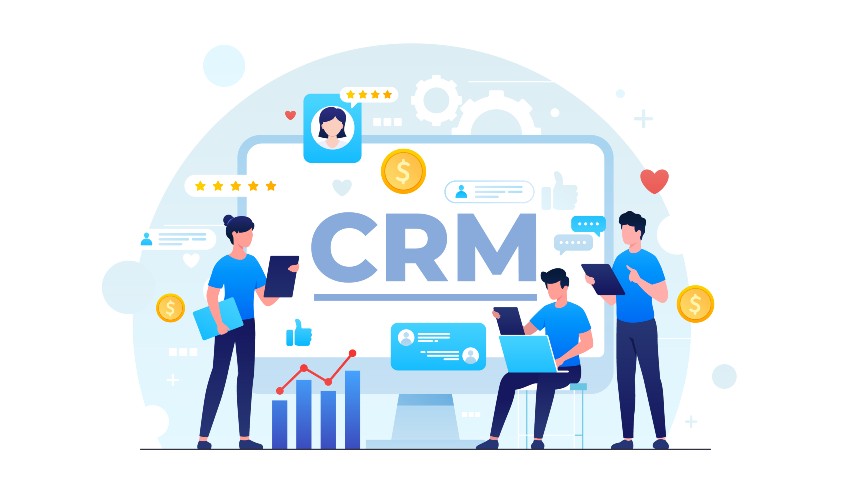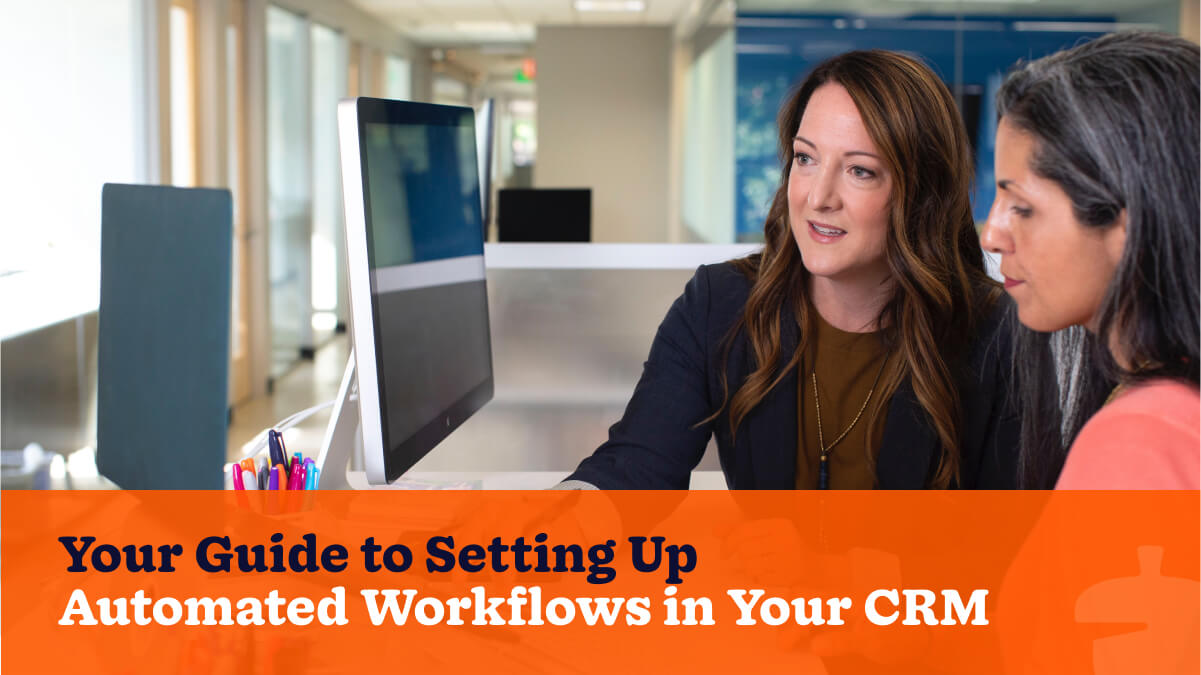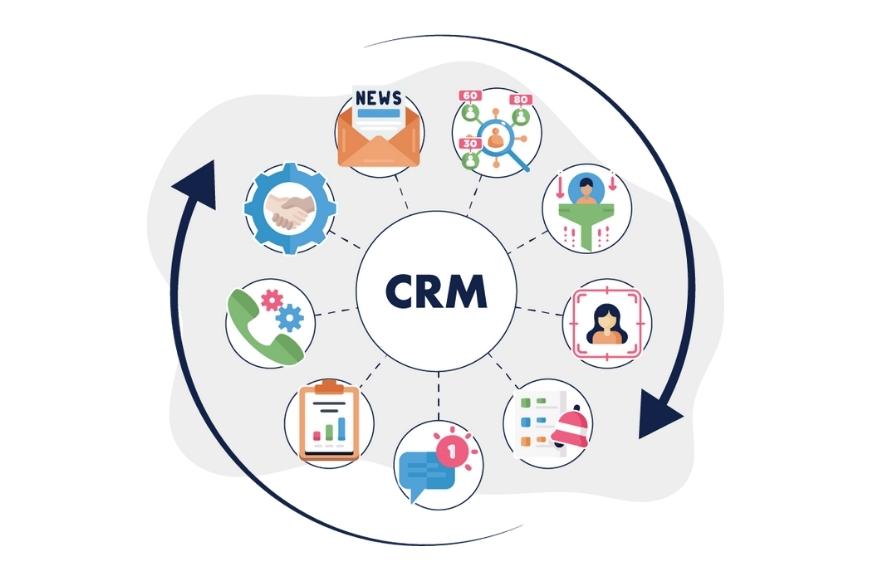Mastering CRM Marketing Workflows: A Comprehensive Guide to Automation and Success
In today’s fast-paced business environment, where customer expectations are constantly evolving, and competition is fiercer than ever, having a robust Customer Relationship Management (CRM) system isn’t just a luxury—it’s a necessity. But a CRM system is only as effective as the workflows that drive it. That’s where CRM marketing workflows come into play. They’re the unsung heroes, the behind-the-scenes engines that automate tasks, personalize interactions, and ultimately, drive revenue. This comprehensive guide delves deep into the world of CRM marketing workflows, providing you with the knowledge and tools you need to optimize your strategies and achieve unparalleled success.
What is a CRM Marketing Workflow?
At its core, a CRM marketing workflow is a series of automated steps that are triggered by specific events or conditions within your CRM system. Think of it as a chain reaction: when a customer takes a particular action, a pre-defined sequence of events is set in motion. This can range from sending a welcome email to a new subscriber to segmenting your customer base based on their behavior or purchase history. The beauty of workflows lies in their ability to streamline processes, save time, and ensure consistency in your marketing efforts.
These workflows are typically designed to manage and automate various marketing activities, including:
- Lead nurturing
- Email marketing campaigns
- Customer segmentation
- Personalized content delivery
- Sales follow-ups
- Customer onboarding
- And much more
By automating these tasks, you free up your marketing team to focus on more strategic initiatives, such as developing new campaigns, analyzing data, and building stronger customer relationships.
Why are CRM Marketing Workflows Important?
The benefits of implementing CRM marketing workflows are numerous and far-reaching. Here are some of the key advantages:
1. Increased Efficiency
Automation is the name of the game. CRM marketing workflows eliminate the need for manual tasks, such as sending individual emails, updating contact information, or assigning leads to sales representatives. This frees up your team’s time and allows them to focus on more strategic activities, like creating compelling content or analyzing customer behavior.
2. Improved Customer Experience
Personalization is key to building strong customer relationships. Workflows enable you to deliver personalized content, offers, and interactions based on customer behavior, preferences, and purchase history. This creates a more relevant and engaging experience for your customers, leading to increased satisfaction and loyalty.
3. Enhanced Lead Nurturing
Lead nurturing is a critical process for converting leads into customers. CRM marketing workflows allow you to create automated sequences of emails and other touchpoints that guide leads through the sales funnel. This helps you stay top-of-mind, build trust, and ultimately, drive conversions.
4. Better Data Management
CRM systems are data goldmines. Workflows help you keep your data organized and up-to-date by automating tasks like data entry, contact updates, and segmentation. This ensures that your marketing efforts are based on accurate and reliable information.
5. Increased Sales and Revenue
By streamlining processes, improving customer experiences, and nurturing leads, CRM marketing workflows ultimately contribute to increased sales and revenue. They help you close deals faster, retain customers longer, and maximize the return on your marketing investments.
Key Components of a Successful CRM Marketing Workflow
Creating effective CRM marketing workflows requires careful planning and execution. Here are the key components you need to consider:
1. Define Your Goals
Before you start building any workflows, you need to define your goals. What do you want to achieve? Are you trying to increase lead generation, improve customer retention, or boost sales? Clearly defined goals will guide your workflow design and help you measure your success.
2. Identify Your Triggers
Triggers are the events or conditions that initiate a workflow. They can be anything from a new lead filling out a form to a customer making a purchase. Identifying the right triggers is crucial for ensuring that your workflows are triggered at the appropriate times.
3. Map Out Your Actions
Actions are the steps that are performed within a workflow. They can include sending emails, updating contact information, assigning tasks, or creating deals. Carefully map out each action in your workflow to ensure that it aligns with your goals.
4. Segment Your Audience
Segmentation is the process of dividing your audience into groups based on their characteristics, behavior, or preferences. This allows you to personalize your marketing messages and deliver more relevant content. Effective segmentation is essential for maximizing the impact of your workflows.
5. Personalize Your Content
Personalization is key to engaging your audience and building strong relationships. Use dynamic content, merge tags, and other personalization techniques to tailor your messages to each individual customer. This will make your marketing efforts more relevant and effective.
6. Test and Optimize
Once you’ve created your workflows, it’s important to test them thoroughly. Make sure that they’re working as expected and that your messages are being delivered correctly. Continuously monitor your results and make adjustments as needed to optimize your performance.
Types of CRM Marketing Workflows
There are countless ways to use CRM marketing workflows, but here are some of the most common and effective types:
1. Lead Nurturing Workflows
Lead nurturing workflows are designed to guide leads through the sales funnel. They typically involve a series of automated emails and other touchpoints that provide leads with valuable information, build trust, and encourage them to take the next step. These workflows often include:
- Welcome emails
- Educational content
- Product demos
- Special offers
- Calls to action
2. Onboarding Workflows
Onboarding workflows are used to welcome new customers and guide them through the initial stages of their relationship with your company. They typically include a series of emails and other touchpoints that provide customers with information about your products or services, help them get started, and ensure that they have a positive experience. These workflows often include:
- Welcome emails
- Product tutorials
- Customer support resources
- Special offers
- Feedback requests
3. Customer Retention Workflows
Customer retention workflows are designed to keep existing customers engaged and prevent them from churning. They typically involve a series of automated emails and other touchpoints that provide customers with valuable content, special offers, and personalized recommendations. These workflows often include:
- Product updates
- Exclusive deals
- Loyalty programs
- Customer surveys
- Re-engagement campaigns
4. Segmentation-Based Workflows
Segmentation-based workflows are triggered by a customer’s behavior, demographics, or purchase history. They allow you to deliver personalized messages and offers to specific segments of your audience. For example, you could create a workflow that sends a special offer to customers who haven’t made a purchase in the last three months or a series of emails to customers who have expressed interest in a particular product category. These workflows may include:
- Abandoned cart emails
- Post-purchase follow-ups
- Product recommendations
- Birthday greetings
- Exclusive content offers
5. Sales Follow-Up Workflows
Sales follow-up workflows streamline the sales process by automating tasks such as sending follow-up emails, scheduling calls, and updating lead statuses. This helps sales representatives stay organized, save time, and close more deals. These workflows may include:
- Automated appointment reminders
- Follow-up emails after demos or presentations
- Lead qualification sequences
- Deal stage updates
- Task assignments for sales reps
Best Practices for Creating Effective CRM Marketing Workflows
To maximize the effectiveness of your CRM marketing workflows, follow these best practices:
1. Keep it Simple
Don’t overcomplicate your workflows. Start with simple, straightforward sequences and gradually add complexity as needed. Overly complex workflows can be difficult to manage and may not be as effective as simpler ones.
2. Focus on the Customer
Always put the customer first. Make sure that your workflows are designed to provide value and enhance the customer experience. Avoid sending generic, impersonal messages that don’t resonate with your audience.
3. Personalize Your Messages
Use personalization techniques to tailor your messages to each individual customer. This will make your marketing efforts more relevant and engaging. Use merge tags, dynamic content, and other personalization features to create unique experiences for your customers.
4. Use Clear and Concise Language
Write your marketing messages in clear, concise language that is easy for your audience to understand. Avoid jargon and technical terms that may confuse your customers.
5. Test and Track Your Results
Continuously test and track the results of your workflows. Monitor your open rates, click-through rates, and conversion rates to see what’s working and what’s not. Use this data to make adjustments and optimize your performance.
6. Segment Your Audience Effectively
Segment your audience based on their behavior, demographics, and purchase history. This will allow you to deliver more relevant and personalized messages.
7. Set Realistic Expectations
Don’t expect overnight success. It takes time to build effective CRM marketing workflows. Be patient, persistent, and willing to experiment. Continuously refine your workflows and measure your results to achieve long-term success.
8. Integrate with Other Systems
Integrate your CRM system with other marketing tools and platforms, such as your email marketing service, social media platforms, and website analytics. This will allow you to create more seamless and effective workflows.
9. Don’t Be Afraid to Experiment
Try different approaches and test new ideas. Experiment with different triggers, actions, and content to see what works best for your audience. Don’t be afraid to fail – it’s a part of the learning process.
10. Stay Up-to-Date
The world of CRM marketing is constantly evolving. Stay up-to-date on the latest trends and best practices by reading industry blogs, attending webinars, and networking with other marketers. This will help you stay ahead of the curve and continue to optimize your workflows.
Choosing the Right CRM for Your Workflows
The success of your CRM marketing workflows depends heavily on the CRM system you choose. Here are some factors to consider when selecting a CRM:
- Automation Capabilities: Make sure the CRM offers robust automation features, including workflow builders, triggers, and actions.
- Segmentation Tools: Look for a CRM that allows you to easily segment your audience based on various criteria.
- Personalization Options: Choose a CRM that offers a wide range of personalization features, such as dynamic content and merge tags.
- Integration Capabilities: Ensure that the CRM integrates with other marketing tools and platforms that you use.
- Ease of Use: Select a CRM that is easy to use and navigate.
- Scalability: Choose a CRM that can grow with your business.
- Reporting and Analytics: Ensure the CRM offers comprehensive reporting and analytics to track the performance of your workflows.
- Customer Support: Look for a CRM provider that offers excellent customer support.
Some popular CRM systems that offer excellent workflow capabilities include:
- Salesforce
- HubSpot
- Zoho CRM
- Pipedrive
- Microsoft Dynamics 365
Measuring the Success of Your CRM Marketing Workflows
Once your workflows are up and running, it’s essential to measure their performance to ensure that they’re achieving your goals. Here are some key metrics to track:
- Open Rates: The percentage of emails that are opened by recipients.
- Click-Through Rates (CTR): The percentage of recipients who click on links in your emails.
- Conversion Rates: The percentage of recipients who complete a desired action, such as making a purchase or filling out a form.
- Lead Generation: The number of new leads generated by your workflows.
- Customer Acquisition Cost (CAC): The cost of acquiring a new customer.
- Customer Lifetime Value (CLTV): The predicted revenue a customer will generate over their lifetime.
- Return on Investment (ROI): The profitability of your marketing campaigns.
- Bounce Rates: The percentage of emails that are not delivered.
- Unsubscribe Rates: The percentage of recipients who unsubscribe from your emails.
By tracking these metrics, you can identify areas for improvement and optimize your workflows to maximize their effectiveness. Regularly analyze your data and make adjustments as needed to ensure that your workflows are delivering the desired results.
Common Mistakes to Avoid
While CRM marketing workflows offer tremendous benefits, it’s easy to make mistakes that can hinder their effectiveness. Here are some common pitfalls to avoid:
- Lack of Planning: Failing to plan your workflows thoroughly before you start building them.
- Overcomplicating Workflows: Creating overly complex workflows that are difficult to manage.
- Ignoring Customer Data: Not using customer data to personalize your messages.
- Sending Generic Messages: Sending generic, impersonal messages that don’t resonate with your audience.
- Not Testing Your Workflows: Failing to test your workflows before launching them.
- Not Tracking Your Results: Not measuring the performance of your workflows.
- Setting and Forgetting: Assuming that your workflows will run perfectly without any ongoing maintenance.
- Neglecting Mobile Optimization: Not ensuring that your emails and landing pages are optimized for mobile devices.
- Ignoring Email Deliverability: Not paying attention to email deliverability best practices.
- Not Staying Up-to-Date: Failing to keep up with the latest trends and best practices in CRM marketing.
By avoiding these common mistakes, you can significantly improve the performance of your CRM marketing workflows.
The Future of CRM Marketing Workflows
The future of CRM marketing workflows is bright. As technology continues to advance, we can expect to see even more sophisticated and powerful automation capabilities. Here are some trends to watch:
- Artificial Intelligence (AI): AI will play an increasingly important role in CRM marketing, enabling marketers to personalize their messages even further and automate more complex tasks.
- Hyper-Personalization: Marketers will be able to deliver highly personalized experiences based on individual customer behavior and preferences.
- Cross-Channel Automation: Workflows will span across multiple channels, including email, SMS, social media, and chat.
- Predictive Analytics: CRM systems will use predictive analytics to anticipate customer needs and behaviors.
- Voice-Activated Marketing: Voice assistants will become increasingly integrated into CRM marketing workflows.
By staying ahead of these trends, you can ensure that your CRM marketing workflows are at the forefront of innovation.
Conclusion
CRM marketing workflows are a powerful tool for automating tasks, personalizing interactions, and driving revenue. By understanding the key components of effective workflows, following best practices, and avoiding common mistakes, you can optimize your strategies and achieve unparalleled success. As technology continues to evolve, the future of CRM marketing workflows is bright. Embrace the power of automation and personalization to build stronger customer relationships and grow your business. Start today by evaluating your current CRM system and identifying areas where you can implement or improve your workflows. The results may surprise you!


